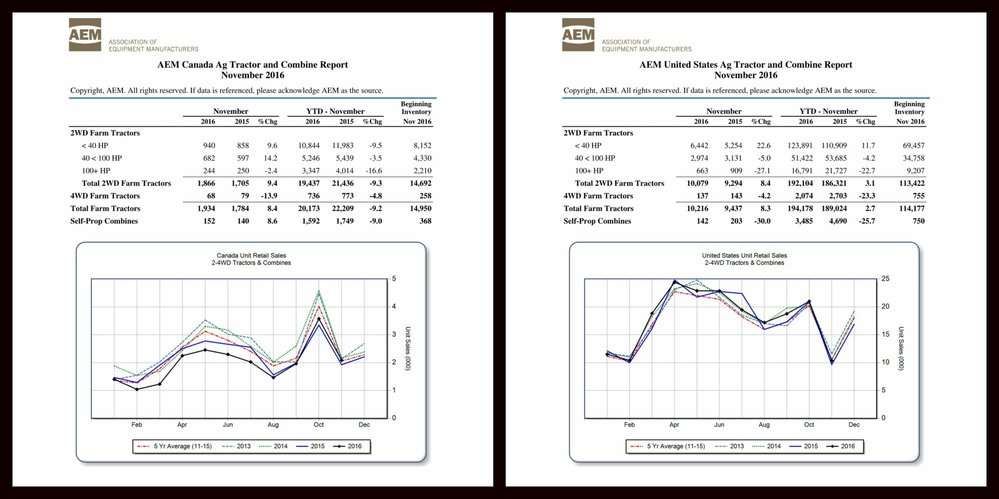Only tractors under 40HP saw positive change
By Diego Flammini
Assistant Editor, North American Content
Farms.com
The Association of Equipment Manufacturers (AEM) released its November combine and tractor sales reports for Canada and the United States. With respect to the U.S. figures, they read similar to October’s – with the exception of tractors under 40HP.
Sales of 2WD tractors under 40HP were up 22.6 per cent in November compared to a year before. Sales of 2WD tractors between 40 and 100HP dropped by five per cent, and 2WD tractors over 100HP fell by 27.1 per cent.
In an AEM release, senior vice president Charlie O’Brien said the figures show sizeable appetite for small and mid-sized farm tractors.

The figures for the larger tractors however, reflect a volatile landscape of commodity prices and lower crop receipts.
“Less than 100HP demand is linked to the livestock segment, hobby farmers and housing,” he said in the release. “The relatively strong incomes in the livestock sub-segment that helped support the demand are expected to become subdued over the next year.
“The larger, production ag tractor sales (>100HP 2WD and 4WD) continue to show negative trends. With no improvement in crop receipts forecasted for 2016 compared to 2015, and subdued commodity prices, the USDA expects the current downturn to continue into 2017.”
In Canada, tractor and combine sales seemed to be a little better with sales of tractors under 40HP and tractors between 40 and 100HP rising by 9.6 and 14.2 per cent, respectively, between November 2015 and 2016.
But sales of 4WD tractors fell by 13.9 per cent during the same period.